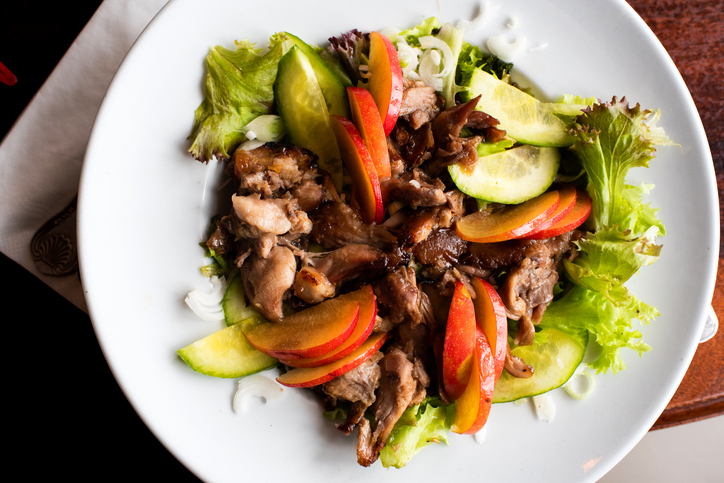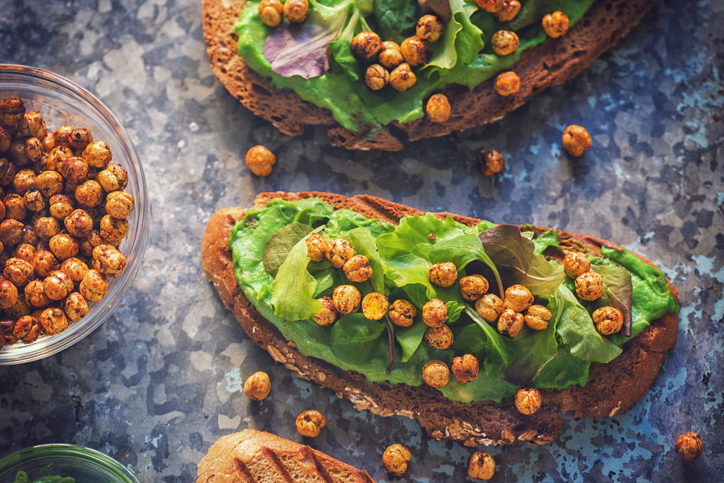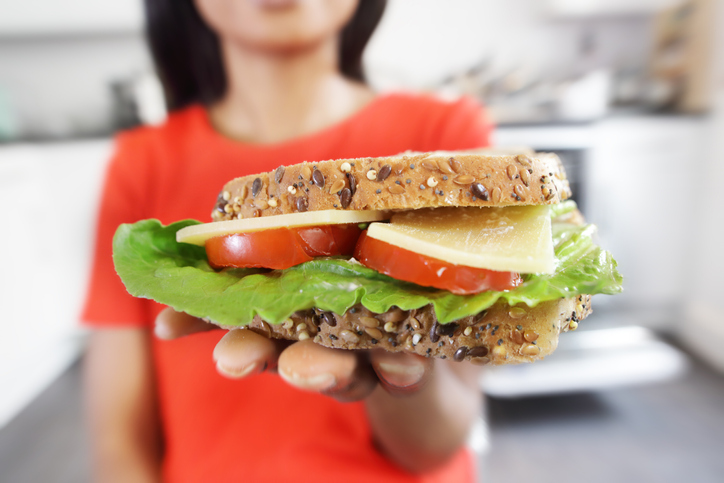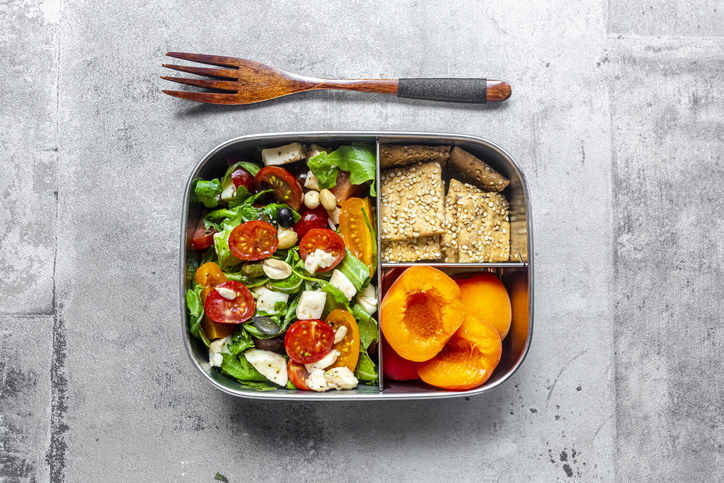
Source: golibo / Getty
Let’s be real: Many people have picked up some not-so-healthy habits over the course of the COVID-19 pandemic. Due to stay-at-home orders, most of us were “forced” to sit around, binge-watch streaming services, and overindulge in food and booze courtesy of delivery apps. There’s no shame or shade in that, we all did whatever we could to survive the unprecedented times. The controversial year that was 2020 has officially come to an end, but it gifted us with a chance to transition into a healthier lifestyle in 2021.
While “new year, new me” might sound ridiculously cliché, after all we’ve been through, we deserve the chance to become better versions of ourselves. Embracing a healthier lifestyle is more than just starving yourself to drop numbers on the scale or fit a societal trend of what you “should” look like. It’s about transforming your mindset, and establishing habits that you will be able to sustain once the pandemic eventually ends — and beyond. It’s about building a sustainable lifestyle from the inside out.
Kara Kash, head dietitian at Factor — a fresh-prepared meal delivery service — shares several tips for developing a healthy lifestyle, and the need to focus on balanced eating instead of weight loss. Kash believes that it’s essential to “nurture a healthy relationship with food” to “achieve balance on a life-long wellness journey.”
Read on for more of Kash’s tips.
Seek professional assistance when making a major change
“Registered dietitians or other qualified medical professionals can provide you with the guidance and support needed when preparing to make a lifestyle change,” she tells MadameNoire. “They can equip you with the knowledge and skills to successfully work toward your goals, provide you with motivation, and answer any questions along the way.”
Having a clear understanding of how we formed our lifestyle choices, and what becoming healthier actually means is extremely beneficial. According to Kash, “Lifestyle changes seem easy on the surface, but our dietary behaviors are often rooted in upbringing and emotion, to name a few. A professional can help untangle these connections, and help you make sense of what a healthy lifestyle looks like for you.”

Source: kajakiki / Getty
Don’t focus on weight loss, focus on health
When it comes to cultivating healthier habits, most people’s first inclination is to do whatever they can to lose weight. Kash states that shifting that narrative is key. “When we put too much focus on weight loss, we can lose sight of what it means to live a healthy lifestyle, and get bogged down with the number on the scale,” she explains. “This can lead to discouragement and excessive restrictions. Health can be achieved at any size!”
The journey toward becoming your most healthy self can come with many ups and downs, but you should give yourself grace along the way. “Think about all of the time you’ve spent following your current routine and building those habits,” Kash says. “When making a lifestyle change, it’s important to realize that you not only have to form new habits, but you also have to break old ones.”
Start small
Transitioning into an improved way of living doesn’t have to be an overnight change, either. In fact, Kash suggests the opposite. “I would recommend starting small. Think about what change you are most motivated to make and start there,” she says. “Form a plan of what that change will look like. Consider any barriers that might get in your way, and develop a plan to push past those barriers.”
Create a meal plan
Creating a meal plan is a cheat code for developing a healthy lifestyle. “Not having healthy meals planned and prepared can lead to excessive snacking or quick fast-food runs,” Kash says. “Whether it’s preparing a grocery list and prepping your own meals, or choosing a meal delivery service, meal planning does require some work up front. However, once you have your meals and snacks prepared, you just need to grab and eat!”

Source: Peter Cade / Getty
Incorporate whole and fresh foods into your meals
Having a clear understanding of what your body needs is a crucial part of the process. “It’s important to incorporate whole and fresh foods at most meals and snacks throughout the day,” says Kash. “For meals, focus on a combination of fruits and vegetables, lean proteins, whole grains, legumes and lentils, and healthy fats. For snacks, focus on a protein and produce combination. Designing your meals and snacks in this way will offer an optimal nutrient profile that can help to stabilize blood sugar levels, and keep you feeling fuller for longer.”
Think about what you should be eating
Of her many tips, Kash believes in focusing on what you can incorporate into your diet versus the things that you should steer clear of. “Oftentimes, we’re too focused on what we shouldn’t be eating and forget about what we should be eating! This can lead to an unbalanced diet,” she explains. “Throughout the day, consider if there are any food groups that you lack. Have you consumed one to two servings of fruit? What has your protein intake looked like? Identify any areas that are lacking, and add some yummy and fresh foods to your day.”
Focus on mindfulness and intention
Maintaining a healthy lifestyle goes beyond the physical act of eating, though. “After you’ve crafted a balanced meal, focus on mindfulness and intention,” Kash stresses. “Our bodies are very good at telling us when we’re hungry and when we’re full. We’ve just become bad at listening,” she adds. “Prior to consuming a meal or snack, ask yourself if you’re truly hungry. If you are, great! Then, spread out your mealtime over 15 to 20 minutes, and cue into your sense of fullness. Honoring these cues is key to controlling cravings and reducing excessive caloric intake.”

Source: Westend61 / Getty
A balanced diet leaves room for treats
When it comes to lifestyle changes, people often think about the things they won’t be able to indulge in any longer, but that’s not always the case. “The great thing about a balanced diet is that it still allows for indulgence in your favorite sweets and treats. What we want to avoid is overindulgence,” says Kash. “The key here is to consume nutrient-rich foods to nourish your body and keep it from feeling restricted or deprived. Then, when it comes time to enjoy a processed meal or snack, opt for a small portion, keep it to a single serving, and savor every bite!”
Add pops of color to your meals
Developing a healthy lifestyle doesn’t have to be boring either. There are endless ways to transform your meals so that you don’t get too bored. According to Kash, adding a pop of color is one option to spice up your meals. “The color hues of food indicate different nutrient and antioxidant profiles, which is why it’s important to eat a colorful diet. I try to add a unique and colorful fruit or veggie to all of my home-cooked meals. Not only is this boosting my health, but it also adds a bit of fun to mealtime.”
RELATED STORIES:









